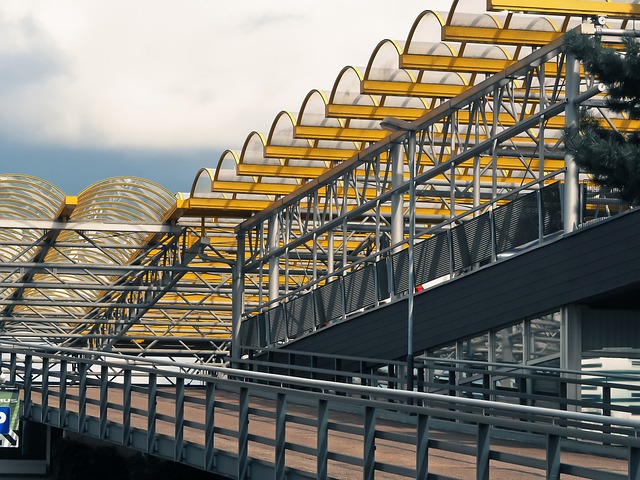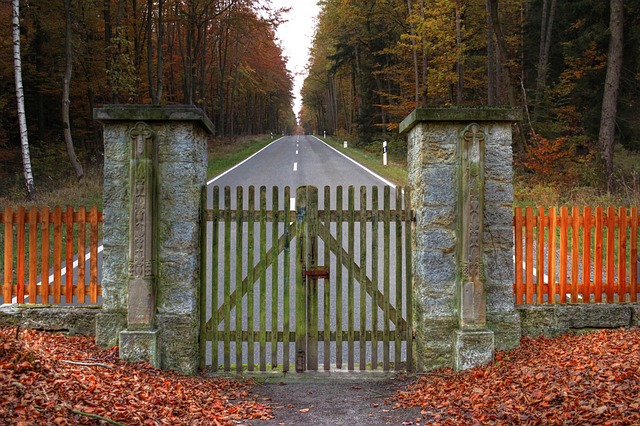Choosing a low-maintenance driveway that withstands various climates and usage while being cost-effective is crucial for homeowners. Concrete and asphalt are robust options that handle heavy traffic and resist stains, requiring minimal sealing to maintain their condition. Asphalt's low friction surface is simple to repair and helps manage water runoff issues. For those environmentally conscious, interlocking pavers made from concrete or stone offer design versatility and the advantage of replacing individual pieces without overhauling the entire driveway. Rubber driveways provide safety against extreme temperatures, while permeable paving stones support groundwater recharge and reduce runoff. When considering climate impact, materials like concrete and asphalt are suitable for cold regions due to their resistance to freeze-thaw cycles, while permeable options work well in temperate climates by preventing water pooling. In coastal areas, selecting materials that resist de-icing salts and salt spray is essential. The choice of driveway material should consider local weather conditions, usage patterns, and long-term cost implications for both initial investment and ongoing maintenance to ensure a durable and cost-effective solution.
navigating the complexities of driveway maintenance can be a thing of the past with the advent of low-maintenance paving options. Homeowners seeking durable, cost-effective, and visually pleasing solutions for their driveways now have a variety of materials to choose from that require minimal upkeep and stand up to the test of time. This article delves into the key considerations for selecting a driveway material that balances longevity with aesthetic appeal, while also offering practical advice on installation and maintenance. From the resilience of concrete to the timeless charm of brick and natural stone, we explore the top five low-maintenance paving options available today. Additionally, we provide insights into the long-term benefits of investing in these sustainable solutions, including their impact on both your wallet and the environment. Whether you’re building anew or renovating your existing driveway, this guide is designed to help you make informed decisions that will enhance your property’s value and ensure a smooth, enduring surface for years to come.
- Choosing Low-Maintenance Driveway Materials: A Guide for Homeowners
- – Evaluating Durability and Appearance of Paving Options
- – Cost Analysis: Long-Term Investment in Low Maintenance
- – Climate Considerations: Selecting the Right Material for Your Region
Choosing Low-Maintenance Driveway Materials: A Guide for Homeowners

When selecting low-maintenance driveway materials, homeowners have a variety of options that offer both durability and ease of upkeep. Concrete, for instance, is an economical choice that can withstand heavy traffic and resist stains, requiring only occasional sealing to maintain its integrity. Alternatively, asphalt provides a smooth, black surface that’s easily repaired if damaged, and it’s permeable, which can aid in reducing water runoff issues. For those seeking a more eco-friendly option, interlocking pavers made from concrete or natural stone offer a range of colors and patterns, as well as the ability to be individually replaced if one becomes damaged. These materials not only contribute to the driveway’s longevity but also reduce the time and effort needed for maintenance compared to traditional driveway surfaces.
Another aspect to consider when choosing low-maintenance driveway materials is the climate and environment where the driveway will be installed. Climates with extreme temperatures may necessitate materials like rubber driveways, which are less affected by hot or cold conditions and can provide a safer surface for vehicles and pedestrians alike. Additionally, materials like permeable paving stones not only reduce maintenance needs through their durability but also support environmental sustainability by allowing water to filter through to the soil beneath, reducing runoff and supporting groundwater recharge. Homeowners should evaluate each material’s compatibility with their specific environment and usage needs to ensure a long-lasting, low-maintenance driveway solution.
– Evaluating Durability and Appearance of Paving Options

When selecting a paving option for your driveway, it’s crucial to consider both durability and aesthetic appeal to ensure a harmonious blend of functionality and curb appeal. Concrete driveways are renowned for their longevity and low maintenance requirements; they offer a variety of finishes that can complement any home design, from modern to traditional. Interlocking pavers, another viable option, present the advantage of modularity, allowing for easy repairs or adjustments while also providing a diverse array of textures, colors, and patterns that enhance visual interest. Asphalt, often chosen for its cost-effectiveness and smooth finish, also stands up well to heavy traffic and inclement weather, making it a practical choice for high-use driveways. Regardless of the material you choose, advancements in paving technologies have led to options that are both durable and aesthetically pleasing, ensuring your driveway serves its purpose without compromising on style.
– Cost Analysis: Long-Term Investment in Low Maintenance

When considering a low-maintenance driveway, it’s crucial to evaluate the long-term costs associated with different paving materials. While initial installation costs for permeable pavers or concrete might be higher than gravel, their longevity and resistance to wear make them a cost-effective choice over time. Permeable pavers, for instance, not only reduce maintenance but also handle water efficiently, potentially saving on drainage solutions. Over the years, the savings from avoiding frequent repairs and sealcoating can significantly outweigh the higher upfront investment.
Moreover, materials like asphalt and concrete require less frequent sealing and repair compared to gravel or concrete pavers, which can crack and shift more easily. The reduced labor and material costs for maintenance over the driveway’s lifespan contribute to its status as a smart financial decision. Homeowners should consider the total cost of ownership rather than focusing solely on the initial installation price. By opting for durable materials that withstand the elements and vehicular traffic, a driveway can remain in good condition with minimal intervention, proving to be a wise long-term investment in low maintenance.
– Climate Considerations: Selecting the Right Material for Your Region

When considering a low-maintenance driveway paving solution, climate plays a pivotal role in selecting the appropriate material. In regions with harsh winters and freeze-thaw cycles, materials like concrete and asphalt may be preferable due to their resilience against frost heave and snow removal practices. Concrete, in particular, offers durability and can last for decades without significant upkeep, provided it’s properly sealed to prevent water damage. For areas with temperate climates that experience moderate rainfall and temperature fluctuations, permeable paving options like porous asphalt or concrete pavers are advantageous. These materials not only reduce the risk of water pooling but also promote natural groundwater recharge while minimizing the need for frequent maintenance. Additionally, the choice between a solid surface like concrete or an interlocking system with pavers should consider local soil conditions and drainage to ensure long-term stability and performance of the driveway surface. In coastal areas with high salinity levels, materials resistant to de-icing salts and salt spray, such as certain types of concrete or specialized paver systems, are essential to prevent deterioration and maintain functionality over time. Selecting a driveway material that aligns with your regional climate ensures both the longevity of the pavement and the efficiency of maintenance efforts in the long run.
When selecting a low-maintenance driveway paving option, homeowners are now well-equipped with the knowledge to evaluate durability, appearance, and long-term costs. This guide has illuminated the importance of considering climate factors in choosing the right material, ensuring that your driveway not only stands up to the elements but also complements your property’s aesthetic. With the insights provided, homeowners can confidently invest in a driveway solution that promises both functionality and beauty with minimal upkeep.
